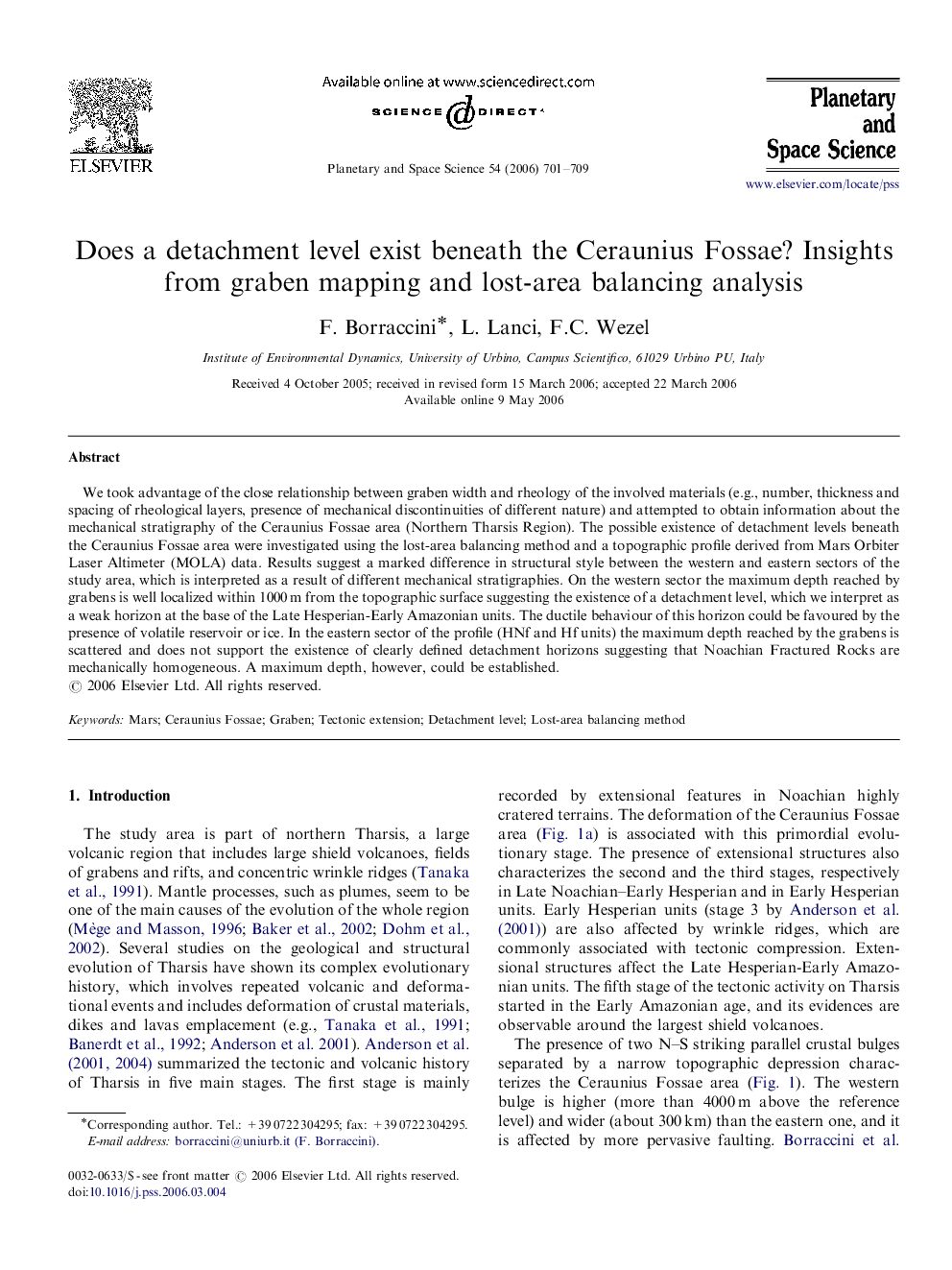| Article ID | Journal | Published Year | Pages | File Type |
|---|---|---|---|---|
| 1782839 | Planetary and Space Science | 2006 | 9 Pages |
Abstract
We took advantage of the close relationship between graben width and rheology of the involved materials (e.g., number, thickness and spacing of rheological layers, presence of mechanical discontinuities of different nature) and attempted to obtain information about the mechanical stratigraphy of the Ceraunius Fossae area (Northern Tharsis Region). The possible existence of detachment levels beneath the Ceraunius Fossae area were investigated using the lost-area balancing method and a topographic profile derived from Mars Orbiter Laser Altimeter (MOLA) data. Results suggest a marked difference in structural style between the western and eastern sectors of the study area, which is interpreted as a result of different mechanical stratigraphies. On the western sector the maximum depth reached by grabens is well localized within 1000Â m from the topographic surface suggesting the existence of a detachment level, which we interpret as a weak horizon at the base of the Late Hesperian-Early Amazonian units. The ductile behaviour of this horizon could be favoured by the presence of volatile reservoir or ice. In the eastern sector of the profile (HNf and Hf units) the maximum depth reached by the grabens is scattered and does not support the existence of clearly defined detachment horizons suggesting that Noachian Fractured Rocks are mechanically homogeneous. A maximum depth, however, could be established.
Keywords
Related Topics
Physical Sciences and Engineering
Earth and Planetary Sciences
Geophysics
Authors
F. Borraccini, L. Lanci, F.C. Wezel,
